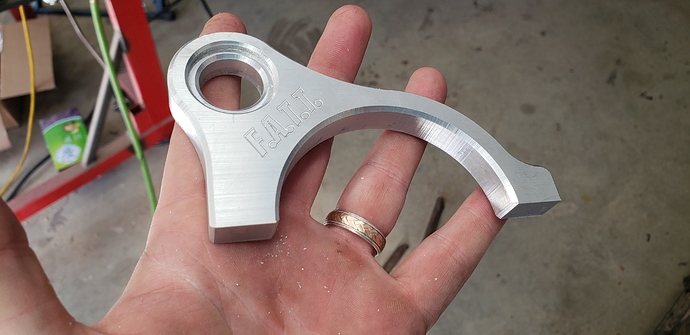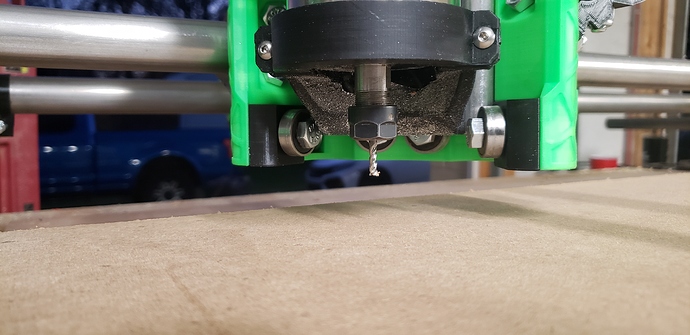I am trying to carefully word this. I mean no offense Just trying to establish realistic expectations on both sides. A large MPCNC machine can do what you are asking by all means…but you absolutely need to have perfect CAM to make that work. I am serious, absolutely perfect, not just picking random numbers and checking you will need to dial in everything. Your starting point is the numbers I suggested earlier. A 12"x12" machine is simple in comparison to run.
To put his in perspective Tormach does not even make a machine remotely clost to that envelope. starting at $19,000 and closer to high $20k you get, 11"x18". So yes, it is going to take some endmills to get dialed in, it would on that machine as well.
Is it 24" wide? If not do not make the machine that wide. Is it impossible, no, Barry machined aluminum on a machine with a 4’x4’ foot print, but not 0.5" deep.
My machine has a work area of about 12x7.5" (90 sq/in), you are trying to use 24x36 (864 sq/in). See the difference now?
My numbers will not work for sure. You are also using spindles few people around here use so we do not have much to go on here, but we are trying.
Not sure what this means, the minimum is about 3.25". If you are saying there is a 3/4" gap to the top of the material get rid of that. Start it as absolutely close to the gantry you can get. The machine basically doubles in rigidity each time you half the Z axis sickout length. 2" vs1", 1"vs 1/2" etc…3/4" is huge, especially in the giant machine you have.
It should not have any effect on price other than time. It will work without it you just need to have more perfect CAM settings. Just trying to get you going. Slotting is by far the hardest operation you can do with a CNC machine.
Work on one issue at a time. get the first pass as perfect as you can after that depth of cut comes into play and I suspect your spindle is out of tram. A crooked spindle will take progressively more uneven cuts as the sickout increases.
The 800W you have is probably the best bet as I can only imagine the 1.6kw one you have is significantly heavier and will only add to the issues you are having. Putting a V10 in a Honda Civic will actually make the car worse if that analogy helps. Power, size, weight are all balanced on this machine.
Some pictures of you build will help, and please tell me you have wood and plastic mastered and cutting perfectly? Wood meaning no scorch marks and very smooth surface finishes and plastic the same thing.


 Just spit balling.
Just spit balling.